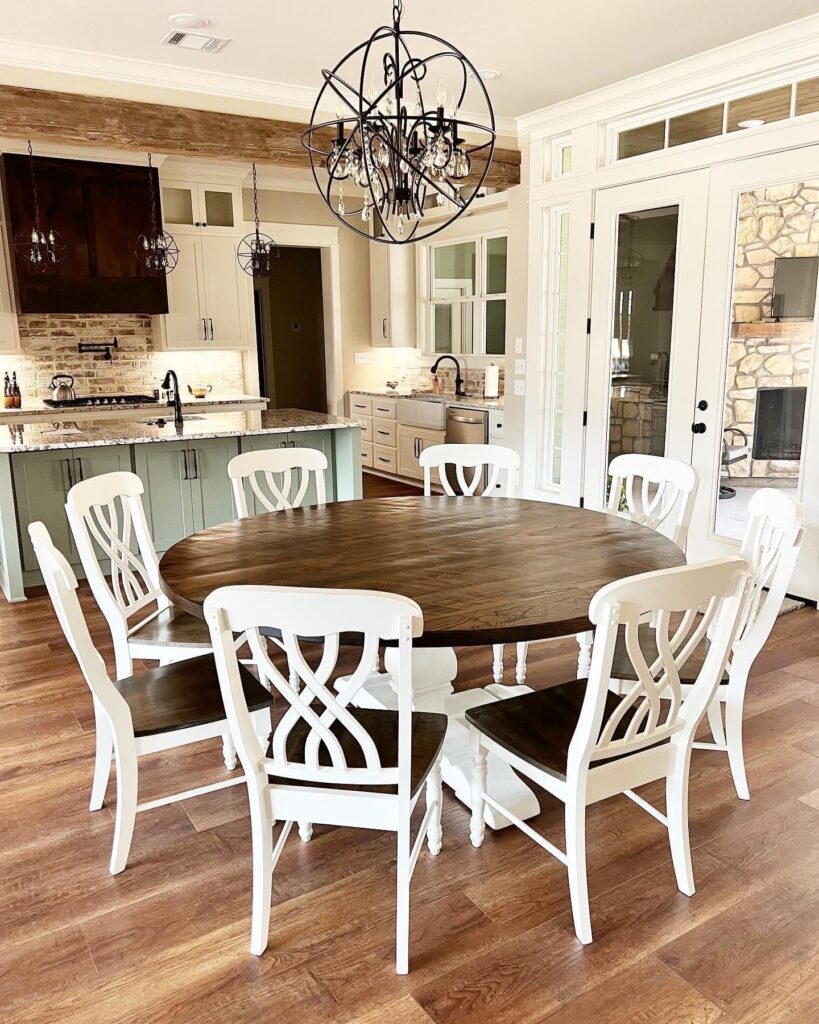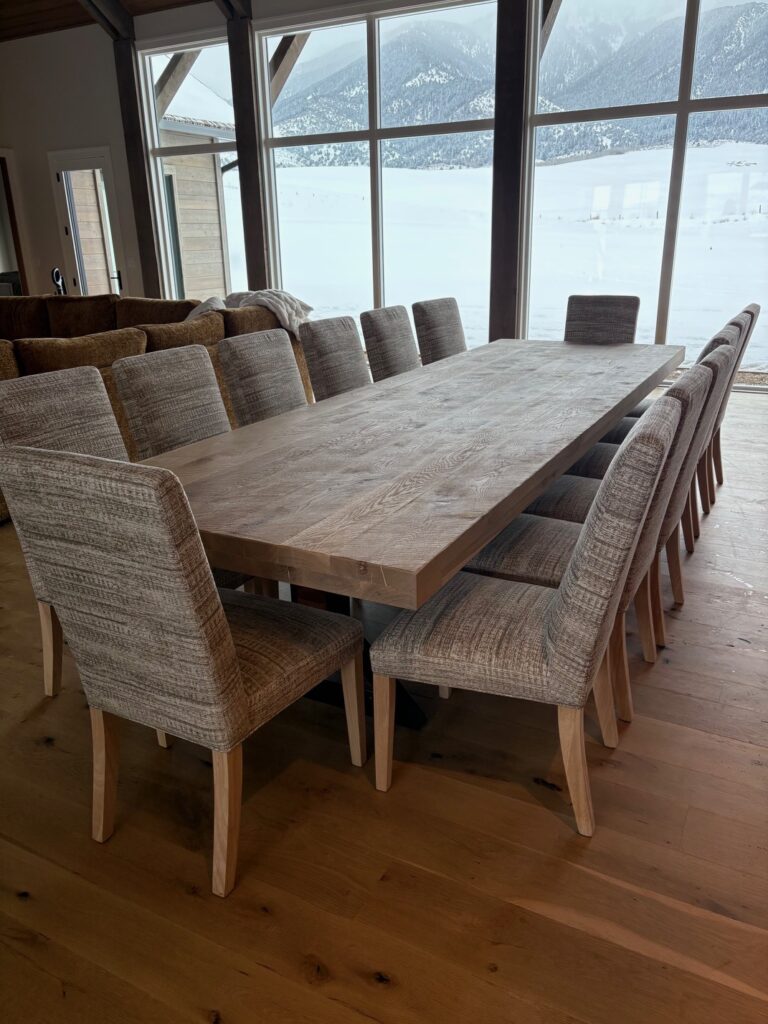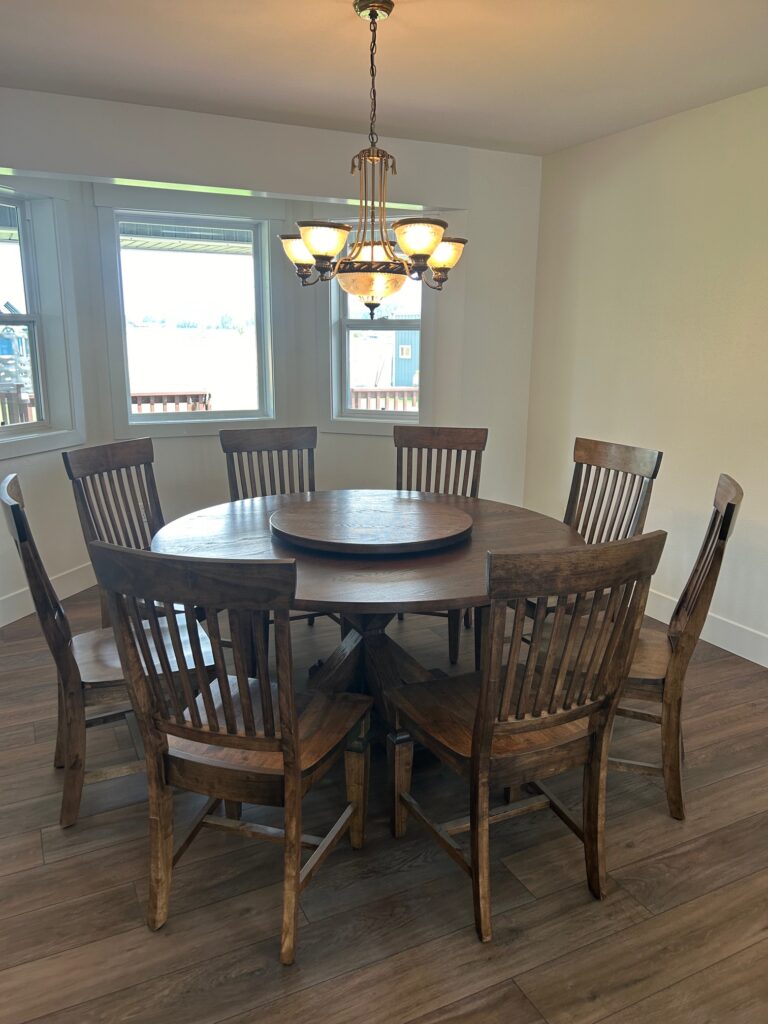Understanding the Craftsmanship Behind a Custom Dining Table
When you choose a custom dining table, you’re not just selecting a piece of furniture—you’re investing in artisanal craftsmanship. Each custom table is the result of careful design, expert craftsmanship, and the use of premium materials.
The process of creating a luxury custom dining table requires skills passed down through generations and attention to detail that elevates the piece beyond a mere functional object to a stunning work of art. In this article, we’ll explore the craftsmanship that goes into creating a one-of-a-kind custom dining table.
1. The Importance of High-Quality Materials
The foundation of any great custom dining table is the quality of the materials used. Solid wood is often the first choice for high-end custom tables, as it offers both durability and beauty. The selection of wood plays a significant role in the table’s overall character and strength.
- Premium wood types: Walnut, oak, cherry, and maple are popular choices for their strength and grain patterns.
- Material integrity: High-quality wood ensures the table not only looks beautiful but stands the test of time, resisting wear and scratches.
The choice of materials impacts the table’s durability, aesthetic appeal, and longevity.
2. Design and Precision Crafting
Crafting a custom dining table involves skill and precision, starting with the design phase. The design reflects the style and preference of the homeowner, factoring in functionality, comfort, and how the table will fit into the space.
- Custom measurements: Each table is made to fit your space perfectly, ensuring the right size and proportions.
- Detailed craftsmanship: Every cut, joint, and edge is carefully crafted to create a seamless piece that is both functional and beautiful.
This phase ensures the table is not only stunning but also sturdy and comfortable.
3. The Art of Joinery and Assembly
The strength and longevity of an Ammon ID custom dining table depend largely on the joinery techniques used during assembly. Skilled artisans use traditional joinery methods to ensure the table is built to last.
- Dovetail and mortise-and-tenon joints: These are some of the most commonly used techniques in custom dining table construction, known for their strength.
- Handcrafted details: Unlike mass-produced furniture, custom tables often feature handcrafted joinery that adds artistry and uniqueness.
These techniques ensure strength and contribute to the table’s aesthetic.
4. Finishing Touches: Staining, Sealing, and Polishing
The final step in crafting a custom dining table is applying the finish. The finishing process enhances the wood, protects the surface, and gives the table its final shine.
- Staining: Staining enhances the grain of the wood, giving it depth and richness while allowing it to take on a beautiful hue.
- Sealing and polishing: After staining, a protective sealant is applied to safeguard the wood from moisture, stains, and wear. Polishing gives the table a smooth, glossy finish.
The finish brings out the wood’s natural beauty and protects it from everyday use.
Conclusion
The craftsmanship behind a custom dining table is what makes it unique and valuable. From the careful selection of high-quality materials to the precision of joinery and the finishing touches, every step in the process is dedicated to ensuring you receive a high-quality, beautiful piece.
If you’re ready to begin your journey to a one-of-a-kind custom dining table, call Fox In The Sawdust at (208) 360-6348 today!…
Understanding the Craftsmanship Behind a Custom Dining Table Read More »




